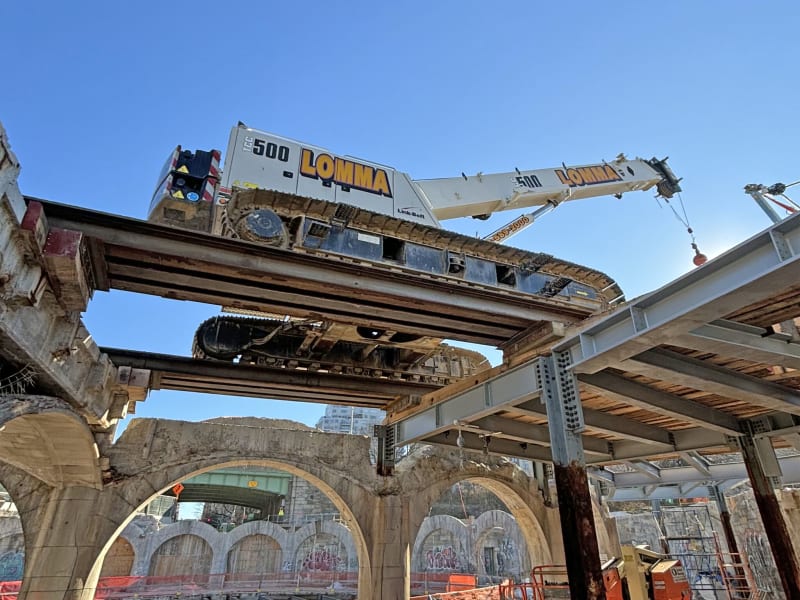Everynameistaken
Structural
Hi All,
I am working on an old building retrofit. The building was built in the 1940s of R/C, and the beams I have a question about are 12" wide and 24" deep. They are continuous beams with three bottom bars that lap at the supports and three top bars the are only over the columns. The beams do not have any shear ties at all! We have some limited testing data for the old concrete and rebar but not very consistent, so we are also considering the conservative historical strength data from a range of sources including CSA S16 - Chapter 14, and historical ACI codes.
The beam concrete is in fair condition and there is some obvious corrosion of the reinforcing that is starting to result in rebar section loss.
Our calculations show that the beam, using current LSD load and CSA A23.3 resistance factors, has a D/C > 1.0 in flexure and right at 1.0 for shear. We are considering upgrade options for these beams, but the access to the underside is very limited and tall scaffolding would be very expensive. So we are considering adding concrete and reinforcing to the top of the beam to increase the effective depth at midspan for positive bending and add more new flexural steel for negative bending. Access to the top of the beam is much simpler meaning all the work can be completed top down.
I have attached a basic sketch here of our concept and looking for some thoughts of others on the forum to see if you all agree that this addition can in fact increase the capacity.
We will need to roughen and dowel the new concrete to the old to transfer the shear flow, which we think will generate increased flexural capacity. I am not sure if adding the extra topping concrete can also be counted on for increased shear capacity?
Do people agree in this approach? Any thoughts or comments are much appreciated!
I am working on an old building retrofit. The building was built in the 1940s of R/C, and the beams I have a question about are 12" wide and 24" deep. They are continuous beams with three bottom bars that lap at the supports and three top bars the are only over the columns. The beams do not have any shear ties at all! We have some limited testing data for the old concrete and rebar but not very consistent, so we are also considering the conservative historical strength data from a range of sources including CSA S16 - Chapter 14, and historical ACI codes.
The beam concrete is in fair condition and there is some obvious corrosion of the reinforcing that is starting to result in rebar section loss.
Our calculations show that the beam, using current LSD load and CSA A23.3 resistance factors, has a D/C > 1.0 in flexure and right at 1.0 for shear. We are considering upgrade options for these beams, but the access to the underside is very limited and tall scaffolding would be very expensive. So we are considering adding concrete and reinforcing to the top of the beam to increase the effective depth at midspan for positive bending and add more new flexural steel for negative bending. Access to the top of the beam is much simpler meaning all the work can be completed top down.
I have attached a basic sketch here of our concept and looking for some thoughts of others on the forum to see if you all agree that this addition can in fact increase the capacity.
We will need to roughen and dowel the new concrete to the old to transfer the shear flow, which we think will generate increased flexural capacity. I am not sure if adding the extra topping concrete can also be counted on for increased shear capacity?
Do people agree in this approach? Any thoughts or comments are much appreciated!

![[sadeyes] [sadeyes] [sadeyes]](/data/assets/smilies/sadeyes.gif)

